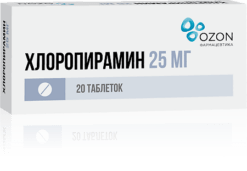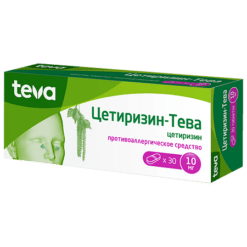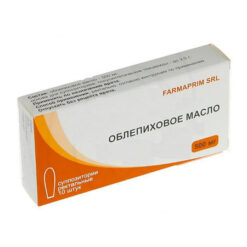-
×


-
×


-
×


Subtotal: €13.75






Subtotal: €13.75






Subtotal: €13.75
€13.03 €11.40
Pharmacotherapeutic group:
Hemorrhoid treatment.
ATX code: C05BA53
Pharmacological action:
The pharmacological action is determined by the properties of the constituents of the drug. Heparin prevents clotting, prevents blood coagulation in hemorrhoids, has anti-edema effect, promotes regeneration of connective tissue, accelerates healing and reduces the number of relapses. Heparin inhibits reactions that cause blood coagulation and form fibrin clots. Heparin in this dosage in combination with plasma antithrombin III inhibits thrombosis by deactivating factor Xa and also by inhibiting the conversion of prothrombin to thrombin. Heparin prevents stable fibrin thrombus formation by inhibiting fibrin-stabilizing factor activation. Heparin also shows anti-inflammatory effect, affecting the vascular endothelium, prevents edema.
Prednisolone belongs to the group of synthetic glucocorticosteroids of medium duration of action; it reduces formation, release and activity of inflammatory mediators (histamine, kinin, prostaglandin, lysosomal enzymes). Suppresses cell migration to the site of inflammation; reduces vasodilation and increased vascular permeability in the inflammation focus. Reduces exudation due to vasoconstrictor action. Inhibits the action of macrophages, target cells, cytokines, which are involved in the development of allergic reactions. Prevents the access of sensitized lymphocytes and macrophages to target cells. It has anti-inflammatory, anti-exudative and anti-allergic effects, reduces inflammation and associated subjective sensations (itching, burning, pain, feeling of moistness due to eczematous changes) in the anorectal area.
Lidocaine has a local anesthetic effect due to blockade of voltage-dependent sodium channels, which prevents generation of impulses in the endings of sensitive nerves and conduct of pain impulses along the nerve fibers. By the combined action of the ingredients of the drug the best effect is achieved.
Pharmacokinetics:
Heparin and prednisolone are effectively absorbed after rectal administration, penetrate the intestinal wall for several hours and then are gradually transported through the portal circulation to the liver, there they are biotransformed by oxidizing enzymes into metabolites and excreted through the kidneys. Half-life of heparin is 1-1.5 hours, of prednisolone 18-36 hours.
In rectal administration, part of lidocaine (35%) undergoes systemic absorption. Maximum concentration in blood lidocaine reaches after 2 hours. Lidocaine is rapidly metabolized in the liver and excreted through the kidneys. Part of lidocaine undergoes enterohepatic circulation and is excreted with the feces. The elimination half-life is 1 to 3 hours.
External and internal hemorrhoids, including acute thrombophlebitis of hemorrhoidal veins in the perianal region, fistulas, eczema, itching in the anus caused by inflammation, anal fissures, preparation for surgery in the anorectal area, as part of complex therapy for thrombosed and operated hemorrhoids.
Pharmacotherapeutic group:
Hemorrhoids treatment.
ATX code: C05BA53
Pharmacological action:
The pharmacological action is determined by the properties of the components included in the drug. Heparin prevents the formation of blood clots, prevents blood coagulation in hemorrhoids, has an anti-edematous effect, promotes the regeneration of connective tissue, accelerates healing and reduces the number of relapses of the disease. Heparin inhibits reactions that cause blood coagulation and form a fibrin clot. Heparin at this dosage in combination with plasma antithrombin III inhibits thrombosis by deactivating factor Xa, as well as inhibiting the conversion of prothrombin to thrombin. Heparin prevents the formation of a stable fibrin thrombus by inhibiting the activation of fibrin-stabilizing factor. Heparin also exhibits an anti-inflammatory effect, affecting the vascular endothelium and preventing swelling.
Prednisolone belongs to the group of synthetic glucocorticosteroids with an average duration of action, reduces the formation, release and activity of inflammatory mediators (histamine, kinin, prostaglandin, lysosomal enzymes). Suppresses cell migration to the site of inflammation; reduces vasodilation and increased vascular permeability at the site of inflammation. Reduces exudation due to vasoconstrictor action. Suppresses the action of macrophages, target cells, cytokines, which are involved in the development of allergic reactions. Prevents access of sensitized 1 lymphocytes and macrophages to target cells. It has anti-inflammatory, anti-exudative and anti-allergic effects, reduces inflammation and accompanying subjective sensations (itching, burning, pain, feeling of wetness due to eczematous changes) in the anorectal area.
Lidocaine has a local anesthetic effect, which is caused by the blockade of voltage-dependent sodium channels, which prevents the generation of impulses in the endings of sensory nerves and the conduction of pain impulses along nerve fibers. The best effect is achieved by the combined action of the components of the drug.
Pharmacokinetics:
Heparin and prednisolone are effectively absorbed after rectal administration, penetrate the intestinal wall for several hours, and then are gradually transported through the portal circulation to the liver, where they are biotransformed by oxidizing enzymes into metabolites and excreted through the kidneys. The half-life of heparin is 1 – 1.5 hours, prednisolone – 18-36 hours.
When administered rectally, part of lidocaine (35%) undergoes systemic absorption. The maximum concentration in the blood of lidocaine reaches after 2 hours. Lidocaine is quickly metabolized in the liver and excreted through the kidneys. Part of the lidocaine undergoes enterohepatic circulation and is excreted in the feces. The half-life is from 1 to 3 hours.
Heparin sodium, Lidocaine, Prednisolone
1 suppository contains:
Active components:
heparin sodium 120 IU,
prednisolone 1.7 mg,
lidocaine hydrochloride 10 mg
Excipients:
witepsol N 15 – sufficient quantity to obtain a suppository weighing 1.0 g.
Hypersensitivity to the components of the drug.
Viral, fungal, tuberculosis and other infectious processes of the anorectal area, disorders of the coagulation system with a predisposition to bleeding.
Pregnancy and lactation period.
Children’s age up to 12 years.
The drug is usually well tolerated. No side effects were identified at the recommended dose of the drug.
When using the drug for more than 5 weeks, systemic side effects associated with the action of prednisolone are possible:
From the endocrine system: decreased glucose tolerance, “steroidal” diabetes mellitus, suppression of adrenal function, Itsenko-Cushing syndrome. From the cardiovascular system, arrhythmias, bradycardia (in predisposed patients), ECG changes characteristic of hypokalemia, and increased blood pressure are possible.
From the nervous system: insomnia, dizziness.
Metabolic: increased excretion of calcium ions, hypocalcemia, increased sweating.
Allergic reactions caused by lidocaine and heparin in the form of itching and irritation of the anus are possible.
In a dry place, protected from light, at a temperature not exceeding 25 ° C.
Keep out of the reach of children.
2 years
Altfarm, Russia
| Shelf life | 2 years |
|---|---|
| Conditions of storage | In a dry place protected from light at a temperature not exceeding 25 ° C. Store out of the reach of children. |
| Manufacturer | Altfarm, Russia |
| Medication form | rectal suppositories |
| Brand | Altfarm |
Buy Hepazolone, rectal, 10 pcs. with delivery to USA, UK, Europe and over 120 other countries.